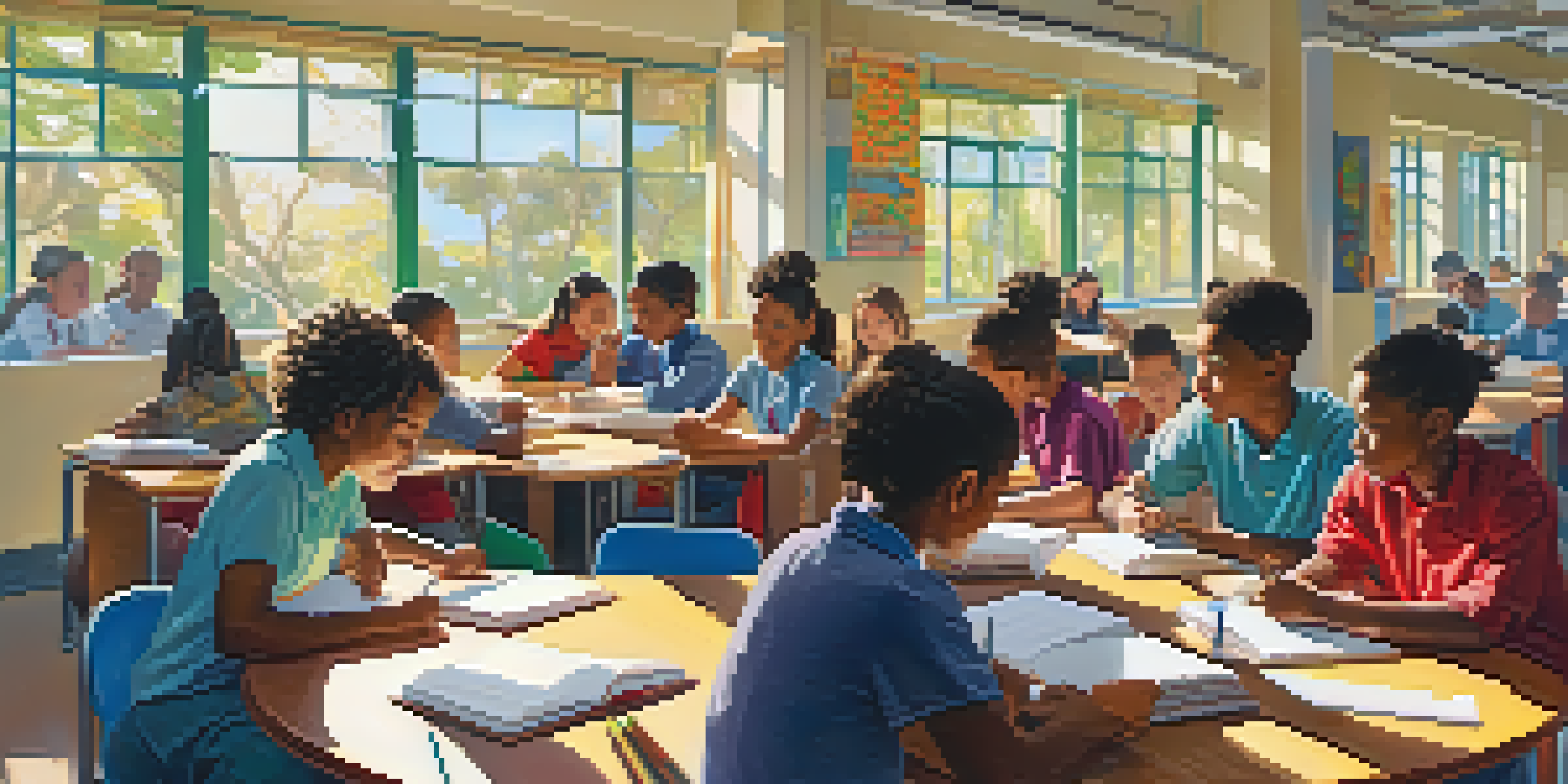The Role of Peer Learning in Enhancing Student Confidence

Understanding Peer Learning and Its Benefits
Peer learning is a collaborative process where students learn from each other, often resulting in deeper understanding and retention of knowledge. This approach allows learners to engage actively, as they discuss concepts and solve problems together. Not only does it enhance academic performance, but it also nurtures essential social skills, such as communication and teamwork.
Building Confidence Through Collaboration
When students work together, they often feel more comfortable expressing their thoughts and asking questions. This collaborative environment reduces anxiety that can come with traditional classroom settings, fostering a sense of belonging. As students share their ideas and receive feedback from peers, they gradually build confidence in their abilities.
Peer Learning Boosts Understanding
Students learn deeply through collaboration, enhancing both academic performance and social skills.
The Role of Diverse Perspectives in Learning
Peer learning often involves students from different backgrounds and skill levels, which enriches the learning experience. Exposure to diverse perspectives encourages students to think critically and broaden their understanding of various subjects. It also helps them appreciate different approaches to problem-solving, which can be empowering.
Encouraging Risk-Taking in a Safe Environment
A key aspect of building confidence is the ability to take risks without the fear of judgment. In a peer learning setting, students can experiment with new ideas and approaches, knowing their peers are there to support them. This safe space allows learners to stretch their abilities, leading to greater self-assurance and a willingness to tackle challenges.
Diverse Perspectives Enhance Learning
Exposure to different backgrounds and viewpoints encourages critical thinking and problem-solving.
The Teacher's Role in Fostering Peer Learning
While peer learning is primarily student-driven, the teacher plays a crucial role in facilitating this process. By creating opportunities for collaboration and providing guidance, educators can help students navigate peer interactions effectively. This supportive environment encourages students to take advantage of peer learning, enhancing their confidence in the process.
Success Stories: Peer Learning in Action
Many educational institutions have reported increased student confidence levels after implementing peer learning strategies. For instance, students participating in study groups often find themselves more engaged and less intimidated by complex subjects. These success stories highlight the positive impact peer learning has on student morale and motivation.
Confidence Grows in Supportive Settings
A safe environment fosters risk-taking and builds self-assurance as students share ideas without judgment.
Measuring Confidence Gains from Peer Learning
Assessing the effectiveness of peer learning in boosting confidence can be challenging but essential. Surveys, self-reflections, and performance metrics can provide insights into students' confidence levels before and after peer learning experiences. These assessments not only help educators refine their approaches but also empower students to recognize their growth.
Conclusion: Embracing Peer Learning for Future Success
Incorporating peer learning into educational frameworks can significantly enhance student confidence and overall learning outcomes. By fostering collaboration, encouraging risk-taking, and valuing diverse perspectives, educators can create an enriching environment. Embracing peer learning today prepares students for a successful future, both academically and socially.